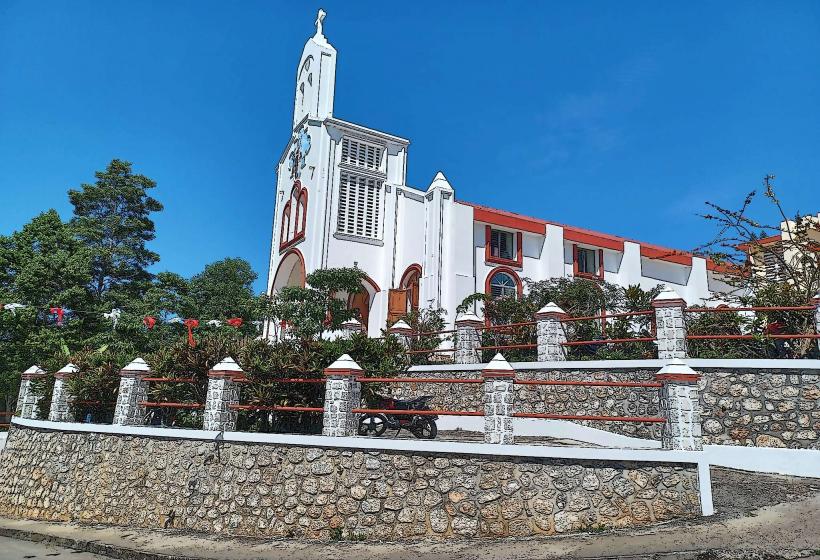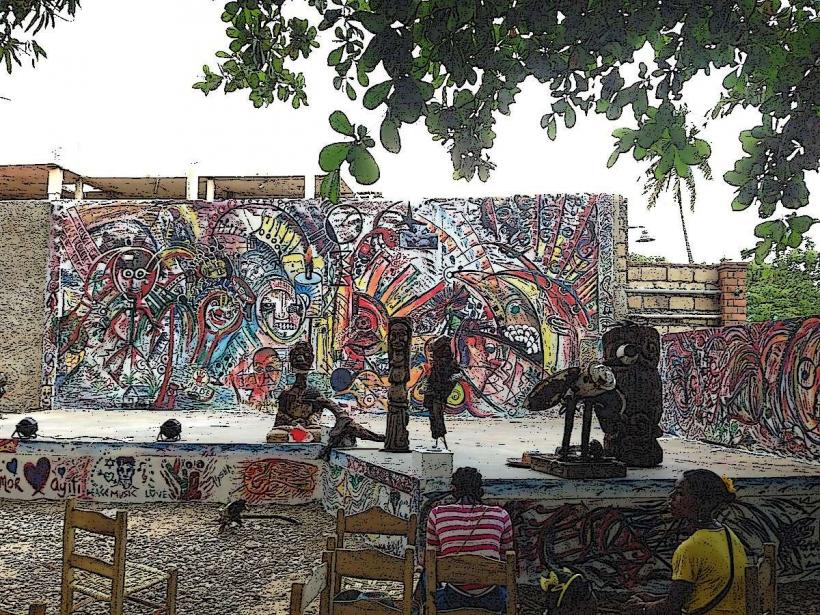Information
Landmark: Grande Rivière du SudCity: Cayes Jacmel
Country: Haiti
Continent: North America
The Grande Rivière du Sud is one of the major rivers in Haiti, flowing through the Sud department in the southern part of the country. It is an important waterway for both the geography and the economy of the region, providing a source of water for agriculture, transportation, and local communities. Here are some key details about the Grande Rivière du Sud:
1. Geography and Location:
- The Grande Rivière du Sud flows through the Southern Peninsula of Haiti, passing through the towns of Les Cayes and Aquin in the Sud department.
- It originates in the mountainous regions of the Massif de la Hotte and flows towards the Caribbean Sea.
- The river travels through a variety of landscapes, including hills, valleys, and plains, contributing to the region's agricultural productivity.
2. Length and Flow:
- The Grande Rivière du Sud is a significant river, stretching over 80 kilometers (about 50 miles). Its flow is characterized by several tributaries that feed into it from the surrounding mountains.
- The river eventually empties into the Gulf of Gonâve on the Caribbean coast, making it an essential part of the water drainage system in the southern region of Haiti.
3. Economic and Agricultural Importance:
- The river plays a key role in the agriculture of the region. Its waters are used for irrigation, supporting the cultivation of crops such as sugarcane, rice, bananas, and other tropical fruits.
- The areas surrounding the river are fertile and benefit from the river's regular water flow, making it a lifeline for local farmers.
- Fishing also plays a role in the local economy, with communities near the river utilizing it as a source of freshwater fish.
4. Hydroelectric Potential:
- The Grande Rivière du Sud has been considered for its potential in hydroelectric power generation. Its steady flow and elevation changes in the surrounding mountains provide opportunities for hydropower projects, although infrastructure and investment have been limited.
5. Cultural and Social Importance:
- The river has cultural significance for the communities that live along its banks. Many of these communities have developed their way of life around the river, with daily activities such as fishing, washing, and water collection forming part of their routines.
- The river is also a vital means of transportation for people and goods. In the past, larger boats have used the river to navigate between inland towns and the coastal areas.
6. Ecological and Environmental Concerns:
- Like many rivers in Haiti, the Grande Rivière du Sud faces environmental challenges due to deforestation, soil erosion, and climate change.
- The surrounding mountainous regions, which are prone to soil erosion, often contribute to sedimentation in the river, affecting water quality and aquatic life.
- Additionally, as with many areas in Haiti, deforestation for agriculture and charcoal production continues to be a significant problem, threatening the natural environment and the health of the river.
7. Flooding and Natural Disasters:
- The river is susceptible to flooding, especially during the rainy season and in the aftermath of tropical storms and hurricanes. Flooding can lead to damage in nearby communities, agricultural lands, and infrastructure.
- In recent years, Haiti has faced increased vulnerability to climate events such as hurricanes, which can exacerbate flooding risks and disrupt communities living along the river.
8. Tourism and Natural Beauty:
- The Grande Rivière du Sud flows through picturesque landscapes, including lush valleys and vibrant local flora and fauna. It is not a major tourist destination in itself, but its natural beauty contributes to the charm of the southern region of Haiti, which is known for its scenic vistas and tranquil settings.
- Visitors to the area can enjoy the surrounding natural environment, though tourism infrastructure in the region is still developing.
9. Key Towns and Communities:
- Les Cayes: One of the largest cities in the southern part of Haiti, Les Cayes sits near the mouth of the Grande Rivière du Sud. It serves as a major economic and transportation hub in the region.
- Aquin: Another significant town along the river, Aquin is located further inland and relies on the river for agricultural and water needs.
- Small rural communities and farms also dot the river's path, with many relying on its waters for daily survival.
10. Conclusion:
The Grande Rivière du Sud is a crucial geographical feature of southern Haiti. It provides vital resources for agriculture, water supply, and transportation to the communities along its path. While it faces environmental challenges and is susceptible to natural disasters, the river remains an important part of the region's economy and culture. Its role in providing water and supporting local life is integral to the well-being of those who live in the southern part of Haiti.



